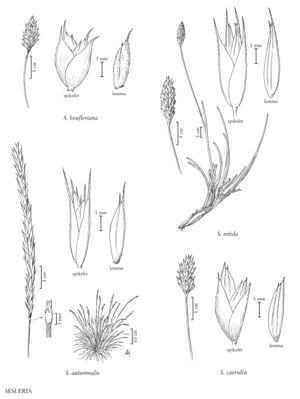Difference between revisions of "Sesleria nitida"
FNA>Volume Importer |
imported>Volume Importer |
||
| (5 intermediate revisions by 2 users not shown) | |||
| Line 25: | Line 25: | ||
-->{{#Taxon: | -->{{#Taxon: | ||
name=Sesleria nitida | name=Sesleria nitida | ||
| − | |||
|authority=Ten. | |authority=Ten. | ||
|rank=species | |rank=species | ||
| Line 32: | Line 31: | ||
|basionyms= | |basionyms= | ||
|family=Poaceae | |family=Poaceae | ||
| + | |illustrator=Annaliese Miller | ||
| + | |illustration copyright=Utah State University | ||
|reference=None | |reference=None | ||
|publication title= | |publication title= | ||
|publication year= | |publication year= | ||
|special status= | |special status= | ||
| − | |source xml=https:// | + | |source xml=https://bitbucket.org/aafc-mbb/fna-data-curation/src/200273ad09963decb8fc72550212de541d86569d/coarse_grained_fna_xml/V24/V24_962.xml |
|subfamily=Poaceae subfam. Pooideae | |subfamily=Poaceae subfam. Pooideae | ||
|tribe=Poaceae tribe Poeae | |tribe=Poaceae tribe Poeae | ||
Latest revision as of 16:26, 11 May 2021
Plants cespitose, not rhizomatous. Culms 20-70 cm, ascending. Sheaths glabrous or sparsely pubescent; ligules 0.6-2 mm, truncate to acute, ciliolate; blades of cauline leaves 3.5-7.5 cm long, 2-3 mm wide, glabrous, glaucous; blades of flag leaves 3.5-7.5 cm. Panicles 2-3.5 cm long, 9-15 mm wide, ovoid. Spikelets 5.6-6.5 mm, with 2-3 florets. Glumes 5-6.5 mm, lanceolate, veins hairy, apices 3-5-awned, central awns 1-2 mm, lateral awns about 0.5 mm; lemmas 5-6 mm, glabrous, 3-5-toothed, central teeth 1-1.5 mm, slightly divergent, lateral teeth 0.5-1 mm; paleas 4.5-5 mm, ciliate on the keels; anthers about 2.2 mm. 2n = unknown.
Discussion
Sesleria nitida is native to the mountains of central Italy and Sicily, where it grows in broken, rocky, calcareous habitats, sometimes forming intermediates with S. autumnalis (Deyl 1980). It is grown as an ornamental in the Flora region.
Selected References
None.
